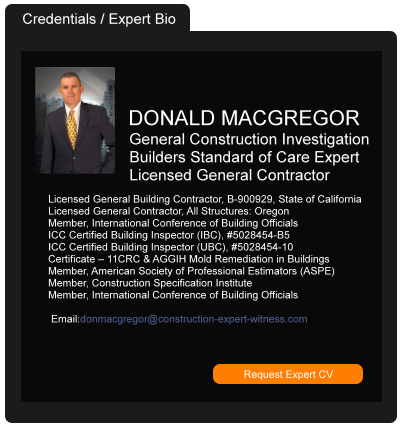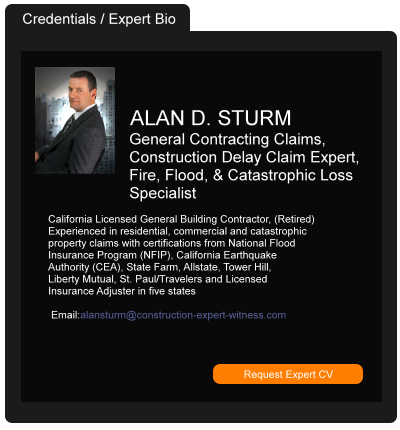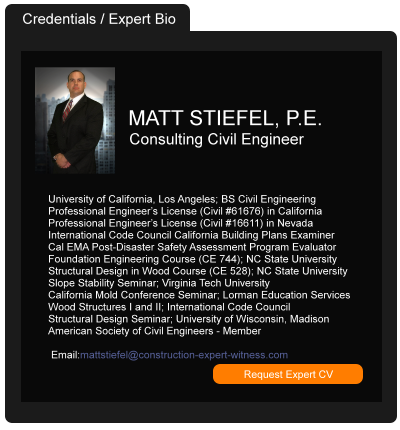Terminator’s Trench Rehab Drives L.A. Land Prices Crazy
June 26, 2014 —
John Gittelsohn and Alan Ohnsman – BloombergBen Stapleton frames the shot with his hands like a movie director, sharing his vision of a junkyard he’s trying to sell for $3.5 million. He sees artist workspaces, retail shops and apartments with Los Angeles skyline views, steps from a riverfront oasis.
Right now the river of his dreams is the concrete flood channel where an 18-wheeler chased Arnold Schwarzenegger on a Harley in “Terminator 2: Judgment Day,” one of the movies that used the 200-foot-wide (60-meter) ditch to depict industrial bleakness. A U.S. Army Corps of Engineers plan to return the Los Angeles River to a more natural state would cost $1 billion and has speculators circling even before the funding’s in place.
“The private money is already moving,” said Stapleton, a vice president at commercial real-estate brokerage Jones Lang LaSalle Inc. (JLL) “They’re looking for opportunities. It’s the private money that’s going to make the vision happen.”
Mr. Gittelsohn may be contacted at johngitt@bloomberg.net; Mr. Ohnsman may be contacted at aohnsman@bloomberg.net
Read the court decisionRead the full story...Reprinted courtesy of
John Gittelsohn and Alan Ohnsman, Bloomberg
Bill Seeks to Protect Legitimate Contractors
December 20, 2012 —
CDJ STAFFThe California construction industry sees Senate Bill 863 as a needed help to legitimate construction businesses. The bill introduces regulations that will help shut down fraudulent contractors and help reduce workers’ compensation fraud. John Upshaw of the Independent Roofing Contractors of California described the revenue lost to California and other states as “phenomenal,” saying that “we need to continue the coordinated efforts if we are to see true workers’ compensation reform.”
Read the court decisionRead the full story...Reprinted courtesy of
Florida Extends Filing Time for Claims Subject to the Statute of Repose
June 13, 2018 —
William L. Doerler - The Subrogation StrategistUnder Florida’s construction-related statute of repose, Fla. Stat. § 95.11, actions based on the design, planning or construction of an improvement to real property are barred if not commenced within 10 years after the later of several possible dates, including the date of actual possession by the owner and the date of the issuance of a certificate of occupancy. The Florida Legislature recently amended the statute to extend the time within which defendants subject to a suit filed close to the end of the 10-year period can file claims. Under the revised law, a defendant can file “counterclaims, cross-claims and third-party claims up to 1 year after the pleading to which such claims relate is served.” Regardless of when the cause of action at issue accrued, the law applies to actions commenced on or after July 1, 2018, except that any action that would not have been barred under Fla. Stat. § 95.11(3)(c) prior to the amendment may be commenced before July 1, 2019.
The revised law provides relief to defendants because, under the prior law, they had to file claims against other potentially responsible third parties before the expiration of the statute of repose. Under the new law, defendants can bring third parties into the action after the expiration of the 10-year statute of repose period.
Read the court decisionRead the full story...Reprinted courtesy of
William L. Doerler, White and Williams LLPMr. Doerler may be contacted at
doerlerw@whiteandwilliams.com
Critical Updates in Builders Risk Claim Recovery: Staying Ahead of the "Satisfactory State" Argument and Getting the Most Out of LEG 3
December 11, 2023 —
Gregory D. Podolak & Cheryl L. Kozdrey - Saxe Doernberger & Vita, P.C.Builders risk claims routinely involve complicated and aggressive debate about the interplay between covered physical loss and uncovered faulty work. However, denials on this front have recently experienced a noticeable uptick in frequency, creativity, and aggressiveness. The insurer arguments concentrate in two key areas with a common theme – that any damage associated with a construction defect is not covered:
- Defective construction does not qualify as a “physical” loss to trigger the insuring agreement; and
- Any natural results of defective construction are excluded as faulty workmanship, even with favorable LEG 3 or similar language.
Neither of these arguments should impede access to coverage in the majority of scenarios. To ensure as much, it is incumbent on the savvy policyholder to understand the insurer tactics, be prepared to spot them early, and have thoughtful counter positions at the ready to address them decisively.
Reprinted courtesy of
Gregory D. Podolak, Saxe Doernberger & Vita, P.C. and
Cheryl L. Kozdrey, Saxe Doernberger & Vita, P.C.
Mr. Podolak may be contacted at GPodolak@sdvlaw.com
Ms. Kozdrey may be contacted at CKozdrey@sdvlaw.com
Read the court decisionRead the full story...Reprinted courtesy of
California Supreme Court Adopts “Vertical Exhaustion” in the Long-Storied Montrose Environmental Coverage Litigation
June 08, 2020 —
Gregory S. Capps & Michael E. DiFebbo - White and Williams LLPOn April 6, 2020, the California Supreme Court issued a decision that held a policyholder is entitled to access available excess coverage under any excess policy once it has exhausted directly underlying excess policies for the same policy period in Montrose Chemical Corporation v. the Superior Court of Los Angeles County, Supreme Court of California, case number S244737. In its unanimous decision adopting this “vertical exhaustion” requirement, the court rejected the “horizontal exhaustion” rule urged by the policyholder’s excess insurers, under which the policyholder would have been able to access an excess policy only after it had exhausted other policies with lower attachment points from every policy period in which the environmental damage resulting in liability occurred.
In 1990, Montrose sought coverage under primary policies and multiple layers of excess policies issued for periods from 1961 through 1985 for environmental damage liabilities arising from its production of insecticide in the Los Angeles area between 1947 and 1982. The ongoing dispute currently arises out of Montrose’s Fifth Amended Complaint which was filed in 2015 seeking declarations concerning exhaustion and the manner in which Montrose may allocate its liabilities across the policies. Each of the excess policies at issue contained a requirement of exhaustion of underlying coverage. The various policies described the applicable underlying coverage in four main ways: (1) some policies contained a schedule of underlying insurance listing all of the underlying policies in the same policy period by insurer name, policy number, and dollar amount; (2) some policies referenced a specific dollar amount of underlying insurance in the same policy period and a schedule of underlying insurance on file with the insurer; (3) some policies referenced a specific dollar amount of underlying insurance in the same policy period and identified one or more of the underlying insurers; and (4) some policies referenced a specific dollar amount of underlying insurance that corresponds with the combined limits of the underlying policies in that policy period. The excess policies also provided, in various ways, that “other insurance” must be exhausted before the excess policy can be accessed.
Reprinted courtesy of
Gregory S. Capps, White and Williams LLP and
Michael E. DiFebbo, White and Williams LLP
Mr. Capps may be contacted at cappsg@whiteandwilliams.com
Mr. DiFebbo may be contacted at difebbom@whiteandwilliams.com
Read the court decisionRead the full story...Reprinted courtesy of
Traub Lieberman Partner Colleen Hastie Wins Summary Judgment in Favor of Sub-Contracted Electrical Company
February 14, 2023 —
Colleen E. Hastie - Traub LiebermanIn a case brought before the New York State Supreme Court, Kings County, Plaintiff alleged injury while performing work at a commercial premises in Brooklyn when he rolled his ankle on a jackhammered/chopped cellar floor slab while carrying a metal pipe from the main floor to the cellar on the subject premises. The property was owned by New York City entities, who were listed as Defendants in the underlying suit. A Construction Company was hired as the general contractor and construction manager for the work, who hired the Electrical Contractor to perform the main electrical fit out for the subject premises. The Electrical Contractor then hired Traub Lieberman’s client, the Electrical Subcontractor, to work on cellar-level conduit, cabling, backboxes, and lighting control systems. The Electrical Contractor, as Second Third-Party Plaintiff, brought suit against the Electrical Subcontractor, as Second Third-Party Defendant, for damages related to the underlying suit.
Read the court decisionRead the full story...Reprinted courtesy of
Colleen E. Hastie, Traub LiebermanMs. Hastie may be contacted at
chastie@tlsslaw.com
Contractors: Revisit your Force Majeure Provisions to Account for Hurricanes
September 20, 2017 —
David Adelstein - Florida Construction Legal UpdatesWe now know and can appreciate the threat of hurricanes. Not that we did not appreciate the reality of hurricanes–of course we did–but Hurricane Harvey and Hurricane Irma created the type of actual devastation we fear because they hit close to home. The fear came to life, creating panic, anxiety, and uncertainty. It is hard to plan for a force majeure event such as a hurricane because of the capriciousness of Mother Nature. But, we need to do so from this point forward. No exception! And, I mean no exception!!
A force majeure event is an uncontrollable event that cannot be anticipated with any degree of definitiveness. The force majeure event will excusably delay or hinder performance obligations under a contract. One type of force majeure event is a hurricane—an uncontrollable and unforeseen act of Mother Nature.
Read the court decisionRead the full story...Reprinted courtesy of
David Adelstein, Florida Construction Legal UpdatesMr. Adelstein may be contacted at
dadelstein@gmail.com
Colorado Court of Appeals to Rule on Arbitrability of an HOA's Construction Defect Claims
November 20, 2013 —
W. Berkeley Mann, Jr. — Higgins, Hopkins, McLain & Roswell, LLCOn October 24, 2013 the Colorado Court of Appeals granted a rare interlocutory appeal in a multi-family residential construction defect case. The Court of Appeals accepted the case ofTriple Crown at Observatory Village Association, Inc. v. Village Homes of Colorado, Inc.(2013 WL 5761028) as an interlocutory appeal after the parties briefed and obtained rulings from the trial court that compelled the case to binding arbitration in lieu of a jury trial on all issues. The appellate decision of October 24, 2013 did not decide the merits of the case, but discussed the issues to be decided in the eventual merits decision. The significance of the issues presented and the interlocutory nature of this appeal both make this case worth watching for further appellate proceedings.
The core issue in this appeal was the applicability of Colorado’s Uniform Arbitration Act (C.R.S. § 13-22-201, et seq.), based on recorded Declarations filed by the developer. The Declarations mandated that the HOA arbitrate any design/construction disputes with the developer. Immediately prior to suit, the Association sought to amend the Declarations in order to avoid the arbitration process for these claims. The interlocutory appellate issues resulted from the trial court’s order compelling the arbitration over the objections of the Association.
The trial court’s decision was based on a reading of the Colorado Revised Non-Profit Corporation Act (“CRNPC,” at C.R.S. § 7-127-107), which was found applicable to the Association.
Read the court decisionRead the full story...Reprinted courtesy of
W. Berkeley Mann, Jr.W. Berkeley Mann, Jr. can be contacted at
mann@hhmrlaw.com


































































